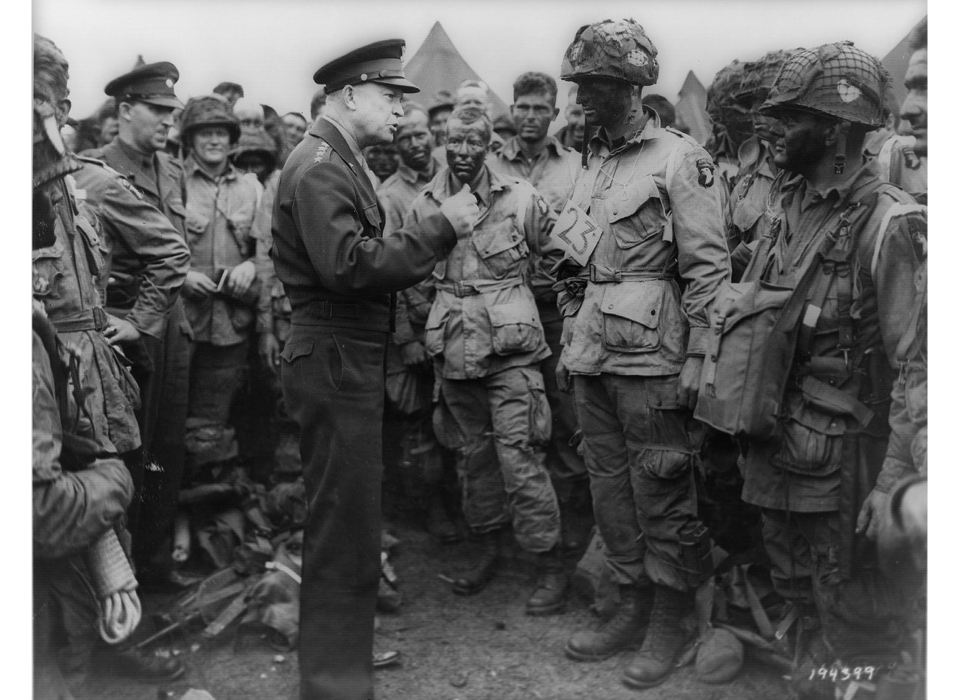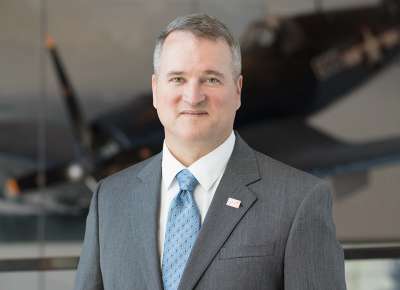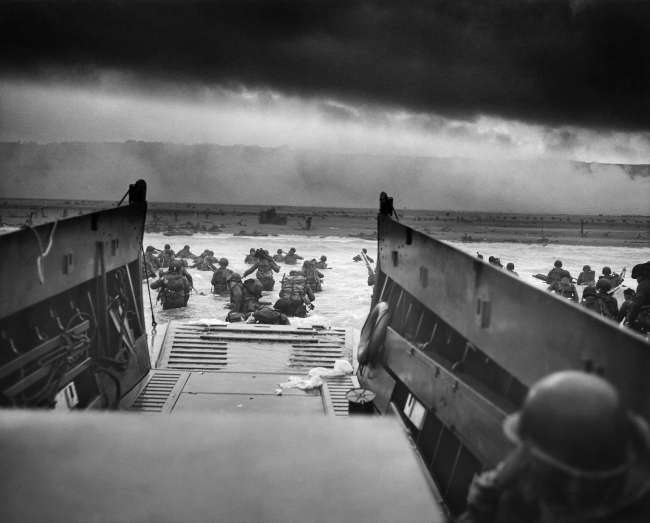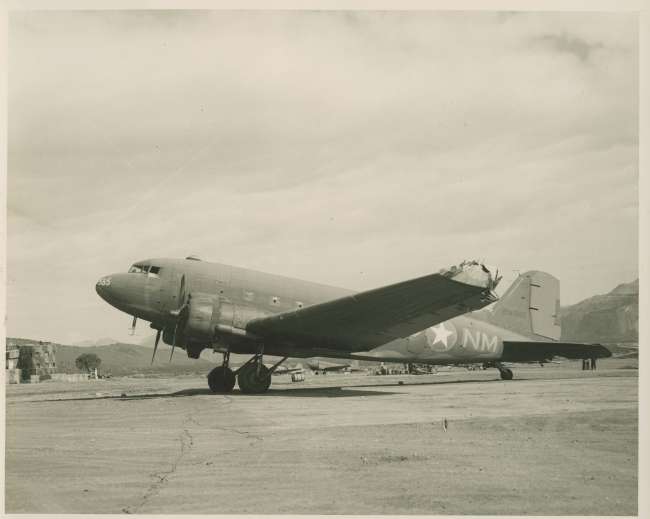Top Photo: General Dwight D. Eisenhower addresses American paratroopers prior to D-Day. U.S. Army photograph
The plan for the invasion of Normandy was unprecedented in scale and complexity. It called for American, British, and Canadian divisions to land on five beaches spanning roughly 60 miles. Planners determined that the 82nd and 101st Airborne Divisions were needed to seize key towns and intersections at the base of the Cotentin Peninsula and secure the four causeways leading off of Utah Beach. This would prevent the Germans from threatening the American western flank and reinforcing beach defenses, thus setting the conditions for an American breakout.
On June 5, 13,400 American paratroopers boarded C-47 aircraft for the largest airborne operation in history. Problems began as they crossed into France. Encountering a cloud bank over the Cotentin Peninsula, most pilots climbed or dove, and antiaircraft fire further dispersed the fleet. In the resulting chaos, aircrews dropped their planeloads far away from their intended drop zones.
Most paratroopers landed with little idea of where they were. In the darkness, men from both divisions intermixed and fought scores of small battles as they moved across the French countryside. Confused, the Germans lost time trying to decide where to direct their counterattacks.
Paratroopers of the 101st Airborne Division seized causeways one and two in the vicinity of Pouppeville. Lieutenant Colonel Robert G. Cole, commander of the 3rd Battalion of the 502nd Parachute Infantry Regiment, landed in the 82nd sector and moved to assault causeways three and four. With these causeways secured by 7:30 a.m., the 101st was able to link up with the 4th Infantry Division near causeway two around midday on June 6.
The 82nd’s 507th and 508th Parachute Infantry Regiments were spread across the countryside west of the Merderet River. The only unit that landed near its drop zone was Colonel William E. Ekman’s 505th Parachute Infantry Regiment, whose main objective was Sainte-Mère-Église and a small bridge at La Fière. Major Edward Krause led a group that took the town shortly after 4:00 a.m. Meanwhile, Brigadier General James M. Gavin led a band of paratroopers to La Fière. Despite taking the bridge, troopers were unable to hold the far end of the attached causeway, and the ensuing brutal battle lasted for days.
Lieutenant Colonel Benjamin H. Vanderoort’s 2nd Battalion of the 505th Parachute Infantry Regiment defended Sainte-Mère-Église’s northern approaches. Vandervoort sent Lieutenant Turner Turnbull further north to set up a roadblock at Neuville-au-Plain. Turnbull and his 40 paratroopers fought against German counterattacks for six hours and bought critical time for the rest of the 505th to solidify the town’s defense.
There were four glider assaults on D-Day bringing in badly needed reinforcements. The glider landings were almost as poorly dispersed as the parachute drops but with fewer casualties. In all, 2,499 American paratroopers became casualties on D-Day. In the 82nd alone, 15 of the 16 battalion commanders in the infantry regiments were killed or wounded. Despite these losses, the Airborne Divisions accomplished their missions and secured a place in the annals of US Army history.
Peter Crean
Colonel (Ret) Peter Crean is the Vice President of Education and Access at the National WWII Museum and is responsible for the content aspects of the Museum’s mission.
Cite this article:
MLA Citation:
APA Citation:
Chicago Style Citation:







![Max Fuchs, New York City cantor, sings as Rabbi Sydney [sic] Lefkowitz, Richmond, VA, conducts the first Jewish services from Germany.](/sites/default/files/styles/max_650x650/public/2025-10/image1.jpg)



